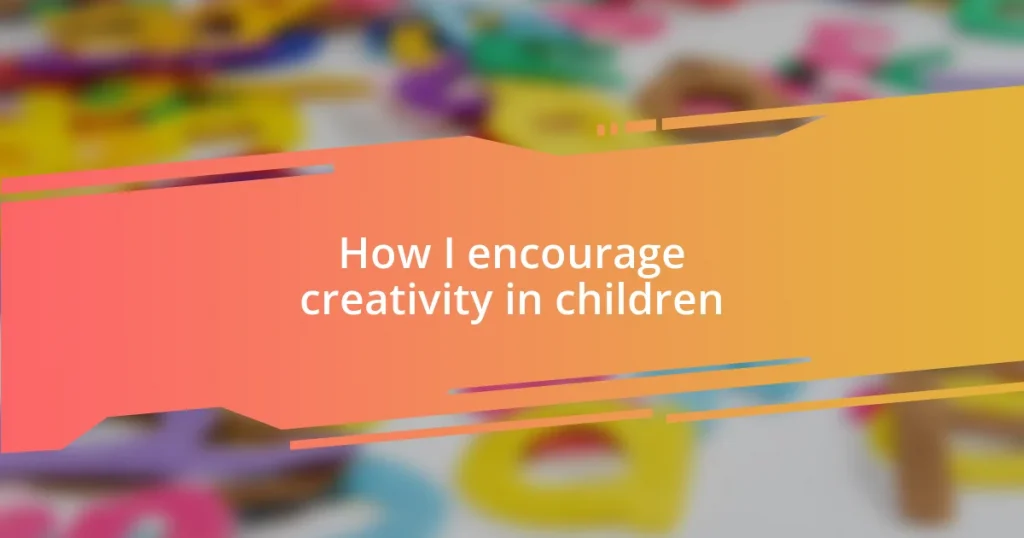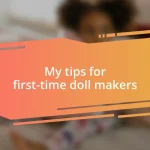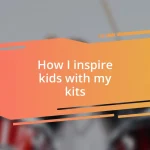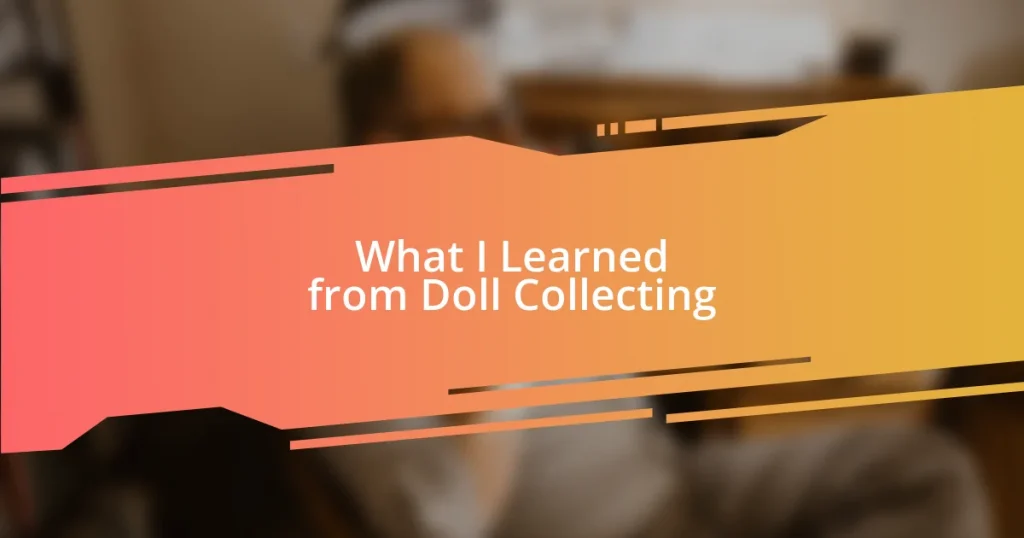Key takeaways:
- Creativity is vital for children’s emotional expression, problem-solving, and critical thinking skills, enabling them to navigate challenges effectively.
- Engaging in creative play fosters imagination, emotional expression, and social skills, promoting teamwork and collaboration among peers.
- Creating a supportive environment free from pressure allows children to explore their creativity authentically, leading to a deeper love for imaginative expression.
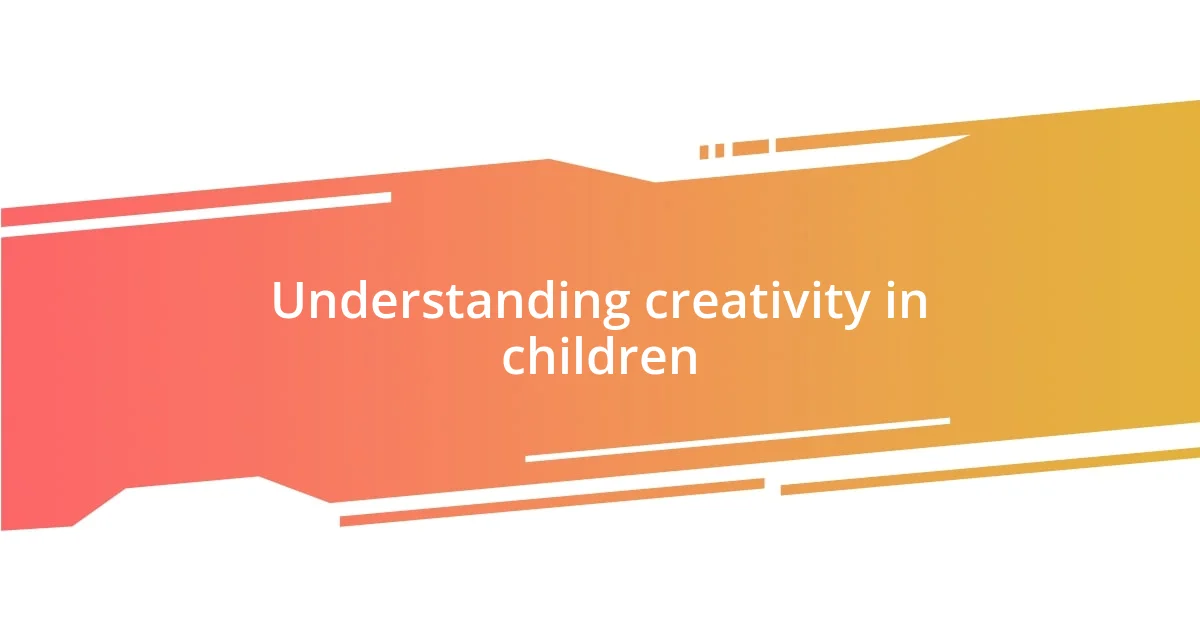
Understanding creativity in children
Creativity in children is often a kaleidoscope of ideas, emotions, and experiences. I remember watching my niece, who could transform a simple cardboard box into a spaceship with just her vivid imagination. Isn’t it fascinating how children naturally see the world through an inventive lens, crafting stories, and scenarios that reflect their unique perspectives?
Understanding that creativity isn’t a luxury but a necessity for children can truly change the way we nurture their potential. It’s an important outlet for expressing feelings and exploring new ideas. Think about it: when do you feel most alive? For many of us, it’s in those moments of creation, whether it’s painting, writing, or even building something from scratch. I see this same spark in children when they lose themselves in their imaginative play.
Moreover, creativity also serves as a bridge to problem-solving and critical thinking. I’ve noticed that when children engage in creative activities, they often come up with unexpected solutions. Have you ever wondered how a child’s ability to imagine can lead them to better navigate challenges? By fostering this creativity, we’re not just helping them to think outside the box; we’re equipping them with essential skills for life.
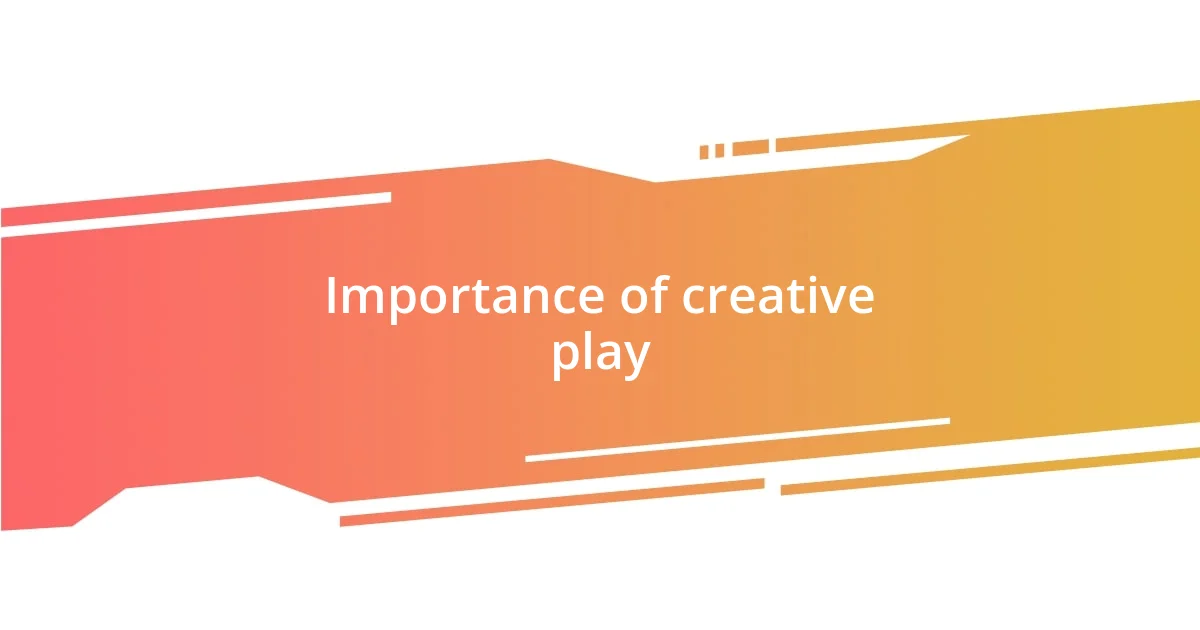
Importance of creative play
Creative play is fundamental to childhood development. I recall an afternoon spent with my friend’s son, who turned a rainy day into an adventure with a few LEGO blocks and some colorful markers. Watching his creativity unfold, I realized how deeply engaged he was in creating elaborate worlds. It’s truly striking how such playful activities not only spark a child’s imagination but help them develop important cognitive skills.
Further, creative play helps children express their emotions and cope with stress. I’ve seen my own kids bring their feelings to life through art and music as they danced freely to their favorite tunes. It’s as if they use their creativity as a language to narrate their experiences. This kind of expression is invaluable – it allows them to share thoughts and feelings that might otherwise remain unspoken.
Lastly, the social aspect of creative play is sometimes overlooked. My daughter often gathers her friends for an art day, where collaboration leads to beautiful surprises. It fosters teamwork and teaches them to value each other’s ideas. Creative play acts as a shared adventure, strengthening friendships and creating connections that thrive on mutual exploration and discovery.
| Benefits of Creative Play | Examples from My Experience |
|---|---|
| Enhances imagination | A child transforms simple objects into fantastical creations. |
| Fosters emotional expression | Kids use art to share their feelings during tough times. |
| Encourages social skills | Children collaborate on projects and activities, building friendships. |
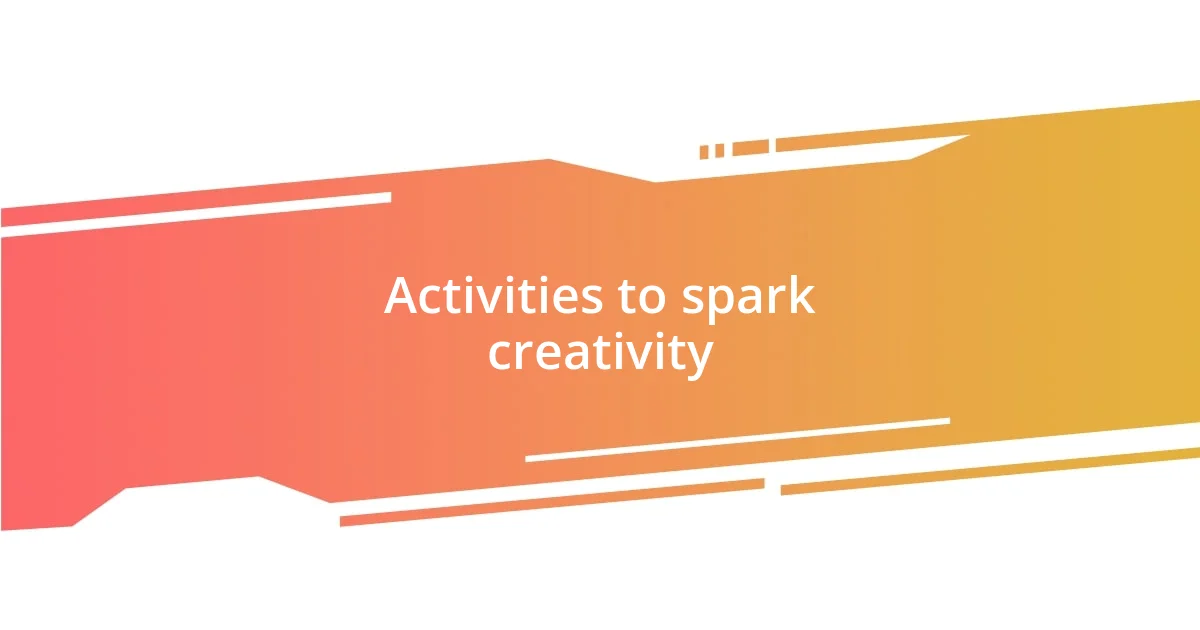
Activities to spark creativity
Engaging in creative activities can truly light up a child’s imagination. One day, while hosting a crafty afternoon at home, I noticed how my son took a simple sheet of paper and transformed it into a colorful origami crane. As he concentrated, I could see his wheels turning; creativity can really thrive when kids have the freedom to explore their passions. It’s refreshing to step back and watch them find joy in creation, and I believe that simple activities often yield the most profound experiences.
Here are some activities that I’ve found particularly effective in sparking creativity:
- Nature Art: Collect leaves, flowers, and twigs to create art pieces or mandalas.
- Storytelling Sessions: Encourage kids to tell or write imaginative stories, perhaps weaving in their experiences or fantasies.
- DIY Instruments: Use household items to create musical instruments, fostering both creativity and rhythm.
- Chalk Mural: Set up an outdoor area where kids can draw large murals on sidewalks with colorful chalk.
- Cooking Creativity: Let them experiment in the kitchen by creating their own dishes, focusing on colorful presentation.
Those moments of creativity can foster not just engagement but also pave the way for skills they’ll use later in life. Just the other day, my daughter took it upon herself to design an entire role-playing game for her friends, complete with characters and scenarios. Watching them dive into her imaginative world felt magical; it reminded me that such creative endeavors cultivate not only fun but also valuable skills like leadership and problem-solving.

Encouraging artistic expression
Encouraging artistic expression in children is all about creating an environment where they feel free to explore their creativity. I remember setting up an art corner in our home and watching my youngest enthusiastically splash paint on a canvas. It was fascinating to see how her once blank space transformed into a riot of colors and shapes. It’s moments like these that remind me how important it is to provide children with the tools and space to express themselves authentically.
I’ve also found that introducing different art mediums can spark greater creativity. One afternoon, I brought home some clay, and I was amazed to see how my children engaged with it differently than they do with traditional painting. Each took their own approach—my son sculpted an imaginative creature, while my daughter preferred making jewelry. This got me thinking: how often do we limit their creative potential by sticking to familiar activities? When kids explore various forms of artistic expression, they can discover hidden talents and preferences, leading to more profound self-discovery.
Sharing their creations can amplify their sense of pride and accomplishment. I’ll never forget the day my daughter displayed her colorful painting during a family gathering. The joy on her face as she explained her inspiration was priceless. It’s essential to celebrate these moments because it reinforces their confidence and encourages them to keep expressing themselves. Isn’t it incredible how art can serve as a bridge for interaction and understanding between a child and those around them?

Fostering problem-solving skills
Fostering problem-solving skills in children is a rewarding journey I’ve experienced firsthand. I often create playful challenges at home, like building the tallest tower from blocks within a time limit. Watching my kids brainstorm and experiment with different designs as they strive for height and stability reminds me that tackling problems can be both fun and educational. It’s fascinating how these simple tasks can help them develop critical thinking while laughing together.
One day, I noticed my daughter frustrated with a puzzle that seemed too challenging at first. Instead of stepping in to help, I encouraged her to take a break and come back to it later. When she returned, her determination was palpable, and eventually, she successfully pieced it all together. The pride she felt in solving it on her own was a powerful learning moment. This experience taught me that allowing kids to struggle sometimes leads to more significant breakthroughs and boosts their confidence in tackling future challenges.
I also love involving them in real-life problem-solving scenarios. For instance, we once had an opportunity to sort out the paperwork for a family trip. I asked them to help categorize travel documents and packing lists. It turned into a delightful exercise where they not only learned about organization but also got to negotiate who handled which task. Moments like these are essential because they shape their ability to solve problems collaboratively, providing invaluable skills that extend far beyond their childhood years. Isn’t it exciting to think how these little interactions can prepare them for bigger challenges ahead?
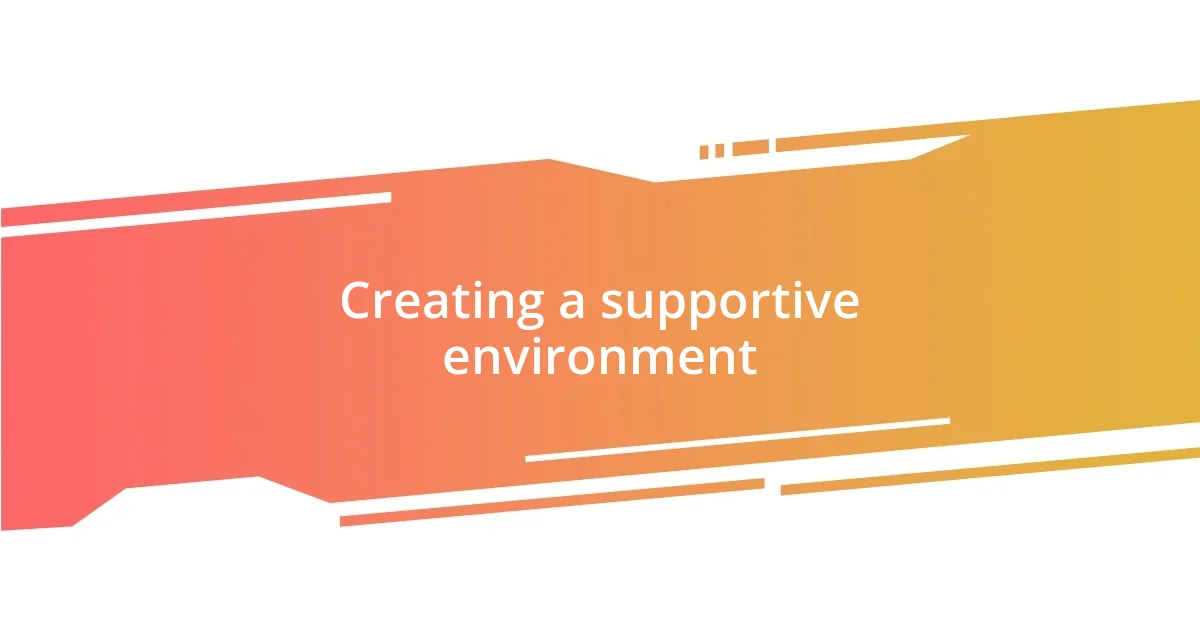
Creating a supportive environment
Creating a supportive environment for creativity means cultivating a space where children feel safe to unleash their imaginations. When we set up a cozy reading nook in our home, complete with colorful cushions and an array of books, I witnessed my kids gravitate towards it during quiet afternoons. It’s heartwarming to see them dive into stories, often creating their own tales inspired by the adventures they read. How can we underestimate the power of a simple reading corner in sparking creativity?
I also emphasize the importance of reducing pressure during creative activities. I remember one evening, we decided to have a family art night, and I told my children that there are no mistakes in art. I emphasized the joy of experimenting with colors, and to my surprise, my son began mixing shades, creating the most unusual but captivating hues. Watching him lose himself in the process made me realize just how crucial it is to provide an accepting atmosphere, where exploration is celebrated rather than critiqued. What’s the point of creativity if it’s shrouded in fear of failure?
Another key aspect I focus on is the freedom to choose their creative pursuits. Once, my daughter expressed an interest in crafting a puppet show, and instead of steering her towards what I thought would be more “educational,” I supported her vision wholeheartedly. We rummaged through our craft supplies, and she spent hours planning her show, writing scripts, and designing characters. The enthusiasm she radiated was infectious! It reminded me that encouraging autonomy not only validates their interests but also nurtures a deep-seated love for creative expression. Isn’t it amazing how a child’s spark can ignite when given the reins to their own imagination?
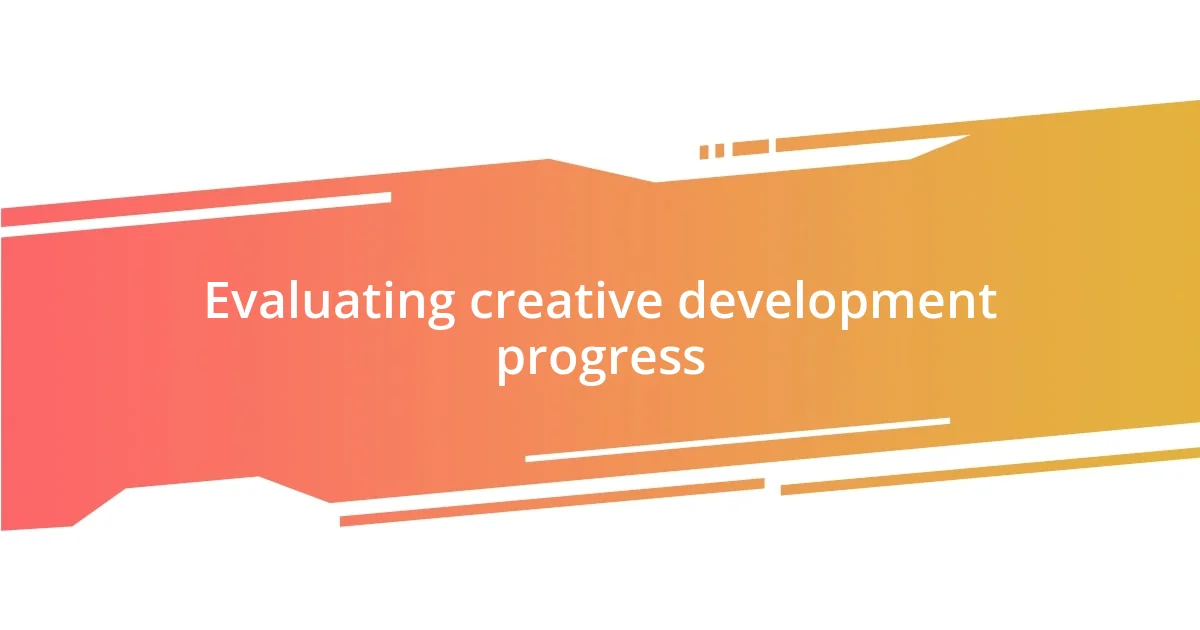
Evaluating creative development progress
Evaluating the creative development progress of children is an insightful process that reveals their growth over time. I often find myself reflecting on how my children tackle new creative projects. Recently, I noticed my son inventing unique games during playdates; it struck me that this wasn’t just fun, but a clear indicator of his imaginative thinking evolving. How often do we pause to appreciate these moments of creativity?
I also keep a journal to document their creative milestones, like the first time my daughter used shadows in her drawings. I remember feeling a rush of pride as she excitedly explained her thought process behind the darker and lighter areas. These snapshots provide not only a record of their progress but also serve as a wonderful reminder of their imaginative journeys. Isn’t it incredible to witness their thought processes unfold?
Additionally, I make it a point to engage them in discussions about their creations. Just the other day, I sat down with my kids, and we talked about what inspired their latest artwork. Their eyes lit up as they recounted stories behind the colors and shapes. This dialogue is essential, not just for evaluating their progress but also for nurturing their reflective skills. It encourages them to articulate their ideas and emotions, making the evaluation process a celebration of their creativity rather than a mere assessment. Don’t you agree that understanding their perspective can deepen our appreciation of their creative development?










